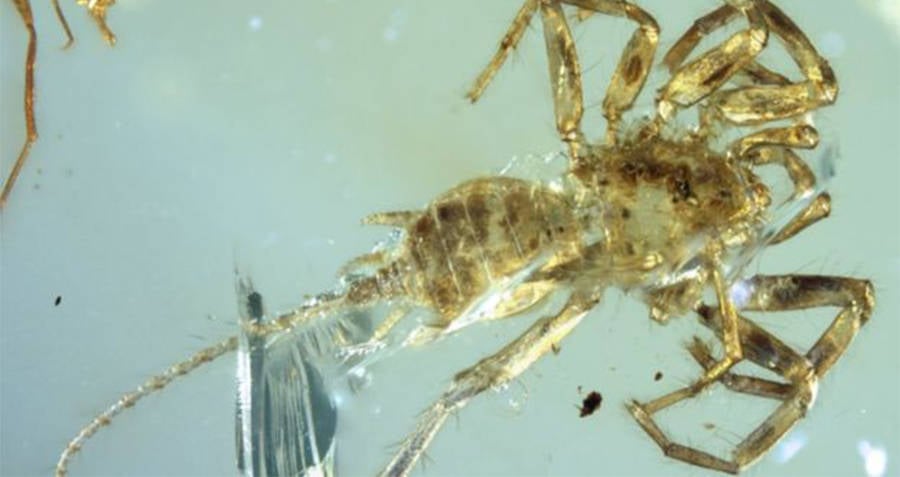A new fossil reveals that spiders have actually been toned down from the scream-worthy monsters they used to be.

BBC/Bo WangA recreation of what the Chimerarachne would have looked like.
If spiders aren’t your thing, we have good news – though they’re creepy now, they actually look a lot better than they used to.
Thanks to a tiny bug trapped in amber Jurassic Park style for the past 100 million years, scientists have been able to learn more about the modern-day spider’s terrifying ancestors.
The little creature belongs to a group of arachnids, which includes spiders and scorpions, and was found in the depths of the rainforests of southeast Asia. Though they’re certain that this particular arachnid is long gone, scientists are not convinced that similar tailed arachnids are gone for good.
The forests of Myanmar, for example, where the fossils were found, are remote enough that a small creature like this could have escaped notice for a few million years.
“We haven’t found them, but some of these forests aren’t that well-studied, and it’s only a tiny creature,” said Dr. Paul Selden of the University of Kansas.

BBC/Bo Wang
The actual spider found encased in amber.
According to scientists, the creature’s heyday was likely the Cretaceous period, when the earth was home to fearsome dinosaurs like the T. Rex. In addition to its tail, the arachnid possesses a mixture of ancient and modern spidery features. For example, it was capable of producing silk, like modern spiders, though it’s not believed that the silk was used for webs.
In a nod to its unusual build, the scientists have named the creature Chimerarachne yingi, for the Greek mythological Chimera, a creature composed of various different animal parts.
Though it is known that spider ancestors once had tails, there were no fossils that backed up their claims.
“We have known for a decade or so that spiders evolved from arachnids that had tails, more than 315 million years ago,” said Dr. Russell Garwood of The University of Manchester, a co-researcher on the study. “We’ve not found fossils before that showed this, and so finding this now was a huge (but really fantastic) surprise.”
“Chimerarachne fills the gap between Palaeozoic arachnids with tails known from rocks (uraraneids) and true spiders, and the fact the new fossils have been wonderfully preserved in Burmese amber has allowed an unmatched detail of study,” said Dr. Ricardo Perez-De-La Fuente, of the Oxford Museum of Natural History.
“There are many surprises still waiting to be unearthed in the fossil record. Like most unexpected findings in paleontology, it probably brings more questions than answers, but questions are what keep things exciting and push the boundaries of science.”
Next, check out this other crazy prehistoric spider ancestor. Then, read about the very first animals on planet earth.




